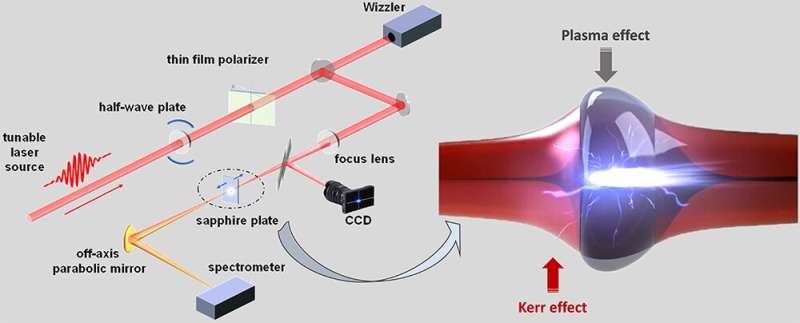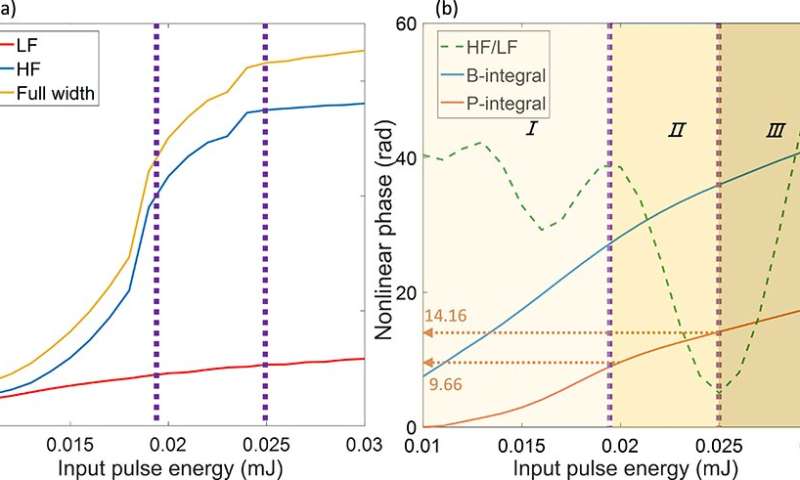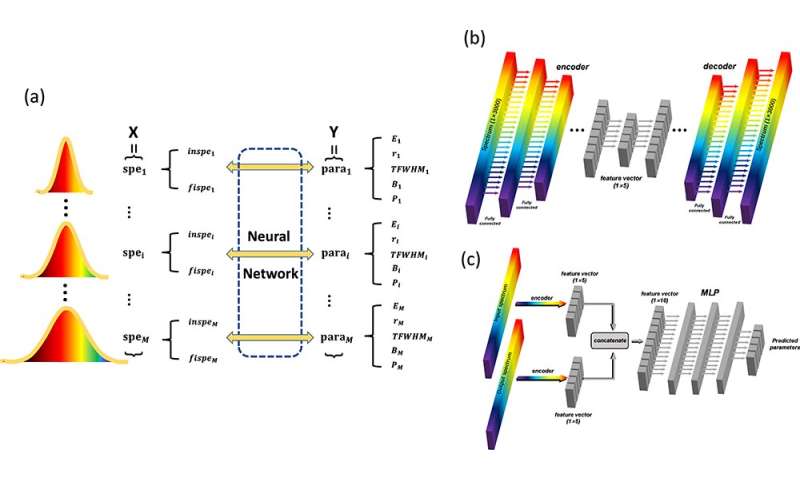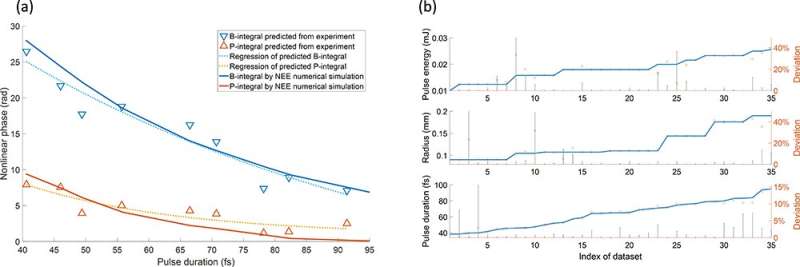Neural network quantifies P-integral in solids

Researchers have recently proposed the concept of ionization integral (P-int) to quantify the strength of plasma effect. This is the first time that nonlinear effects have been quantified experimentally. Relevant results were published in Physical Review Research.
By combining with the widely used B integral (B-int), the two main nonlinear effects in the spectral broadening process: Kerr effect and ionization effect, were investigated numerically and experimentally by Dr. Gao Yitan at the Institute of Physics of the Chinese Academy of Sciences, under the joint guidance of Dr. Zhao Kun and Prof. Wei Zhiyi.
Observing the response of the laser field in the interaction between ultra-fast laser and matter is a powerful way to explore the ultra-fast physical mechanism in the process of interaction, especially in the strong field regime. A series of nonlinear effects take place as a laser pulse propagates in the medium, including Kerr effect (self-phase modulation and self-steepening), Raman effect, photoionization with the induced plasma effect. These effects change the spectral and temporal shape of the laser field so that the output spectrum contains information about nonlinear effects experienced by the laser pulse during propagation implicitly.
It is easy to measure spectra in experiments, but difficult to extract and analyze the nonlinearities behind. At present, these nonlinear effects can only be characterized and analyzed theoretically by solving the nonlinear pulse propagation equation numerically, and experimental research can only provide qualitative analysis of the propagation process.
-

Fig.1. Stages in the complex asymmetric spectral broadening process identified by the ionization integral. Credit: Institute of Physics -

Fig.2. (a) Mapping between spectrum and laser parameters used for neural network training, (b) (c) the structures of the neural network. Credit: Institute of Physics
In view of this, the researchers took the ionization integral as a reference, analyzed the complex asymmetric broadening of spectrum during pulse propagation, and identified the different stages of the broadening process.
They used the neural network algorithm to analyze the theoretical and experimental spectral results, which provides a more accurate understanding of the physics of the entangled nonlinear optics effects and a more convenient tool in the investigation of laser-matter interaction.

Methods of the experiments, including nonlinear quantization and application of neural network algorithm, will bring great influence to the experimental study of ultrafast nonlinear physics.
More information: Yitan Gao et al, Quantification and analysis of the nonlinear effects in spectral broadening through solid medium of femtosecond pulses by neural network, Physical Review Research (2022). DOI: 10.1103/PhysRevResearch.4.013035
Provided by Chinese Academy of Sciences





















